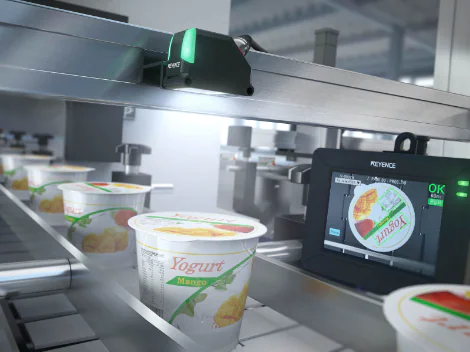The Future Of Smart Sensors In Manufacturing
This is a guest post from Keyence, a manufacturer of sensors, gauges and control devices.
**********************************************************************************************
We live in an increasingly data-driven world, and the manufacturing and automation industries are no exception. As businesses in these fields strive to keep up with demand, maintain quality and stay competitive — all the while maintaining sufficient margins — it is necessary to pursue innovation in every facet of the operation. Incorporating more data into processes and decision-making is one such area of innovation. Smart industrial sensors are the most effective way to gather and use this data.
Today’s connected sensors enable real-time monitoring, data transmission and analysis, early detection of potential maintenance issues, and more insight into — and control over — industrial processes.
As sensors continue to advance and expand their footprint, we will examine some of the ways in which they are poised to impact the future of manufacturing, by expanding on the possibilities already available today.
The Potential Impact of Sensors in Manufacturing
- Doing more from anywhere: Today’s sensors facilitate remote access to machine data, analysis and alerts — easing the burden of 24/7/365 monitoring with the ability to transmit data to an engineer’s laptop or cellphone.
In a landscape where remote access is more important than ever, smart sensors will continue to facilitate this shift, helping personnel stay connected to process data no matter where they are — and enabling collaborative, real-time, on-the-fly decision-making about alerts and potential production issues from anywhere.
- Smart sensors get even smarter: The “smart” in smart sensors refers to their ability to wirelessly communicate with the central data repository, typically via WI-FI. As time goes on, sensors will get smarter; be able to better communicate with one another; collect more data about more production factors with increased accuracy; and facilitate more effective data usage for more efficient maintenance and production.
- More help from AI and ML: The smart, connected factory — with benefits such as predictive maintenance, remote access and increased production quality — is enabled by the massive amount of data that sensors collect. This huge data repository is also useful in areas such as artificial intelligence and machine learning — allowing for more automation in areas such as production alerts, process fine-tuning, quality control and more.
These technologies will never replace human workers — who are necessary for the experience and critical problem-solving skills that machines cannot offer — but they can assist in decision-making and process control.
- Faster and more advanced communication with 5G: As faster communication becomes more prevalent through the 5G network, sensors will become even more powerful and effective, with barely discernable lags in data transmission, and facilitation of powerful maintenance and troubleshooting tools such as digital twins — a digital, real-time representation of a machine or component that allows for testing and monitoring from anywhere, without impacting production processes.
- An oncoming wave of adoption: As with any new technology, sensors face challenges as well as opportunities. Adoption by organizations and personnel resistant to change — especially in the form of wireless technology — has traditionally been one such challenge, which has prevented some manufacturers from realizing the full potential of smart sensors.
Most new production equipment comes with smart sensors and connectivity, but the majority of sensors present across the industry are aftermarket devices retrofitted to existing equipment. As equipment continues to turn over and require replacement in the coming years, more and more businesses should find that they now have sensors in-house, which is likely to reduce a friction point of adoption and help speed the usage of this beneficial technology.
- Helping to close the skills gap: Manufacturing today continues to face a skills gap issue, with older workers retiring and organizations encountering difficulty in finding the qualified personnel to replace them. With sensors, manufacturing is losing its traditional reputation as a dull and dirty factory-based field, with more of the incoming workforce realizing that manufacturing today holds potential for jobs in data science and other more analytical fields. This shift could help manufacturers maintain staff and rebuild their workforce.
The benefits of sensors are already here — more proactive maintenance, earlier detection of issues and more data about operations, to name a few. As the technology continues to evolve, those benefits will likely only continue to grow and evolve as well.
Author bio: Andrew Kominek is Marketing Manager for the Micro Analysis Group at KEYENCE Corporation, a leading provider of digital microscopes and advanced 3D surface analysis systems. He has more than 15 years of experience in marketing, product management and consulting.

